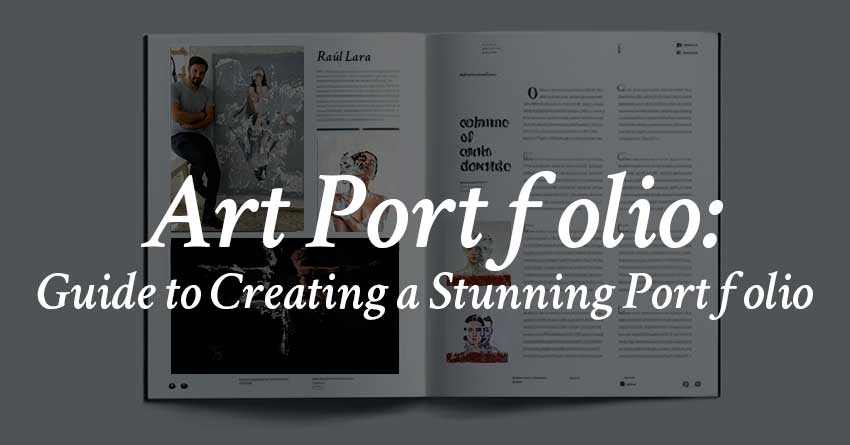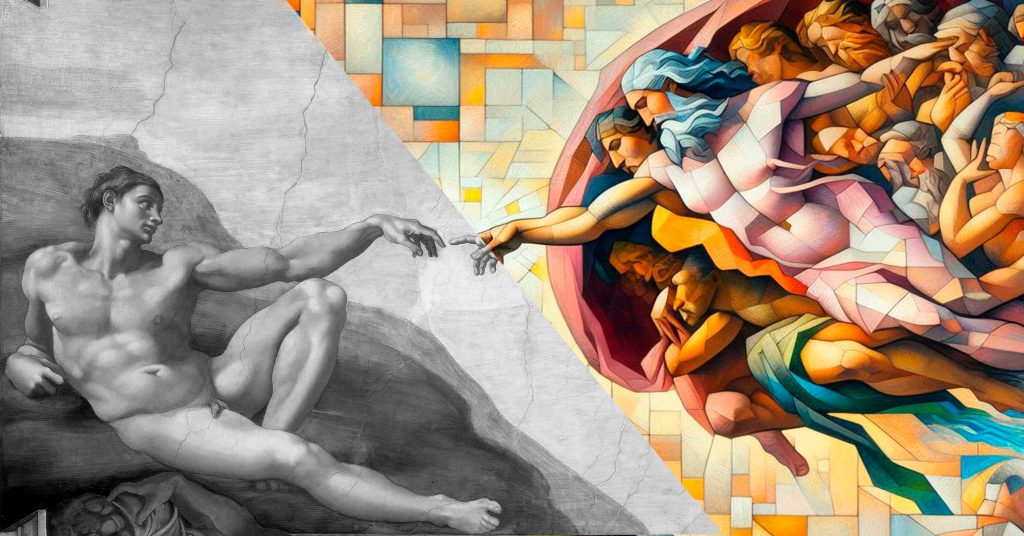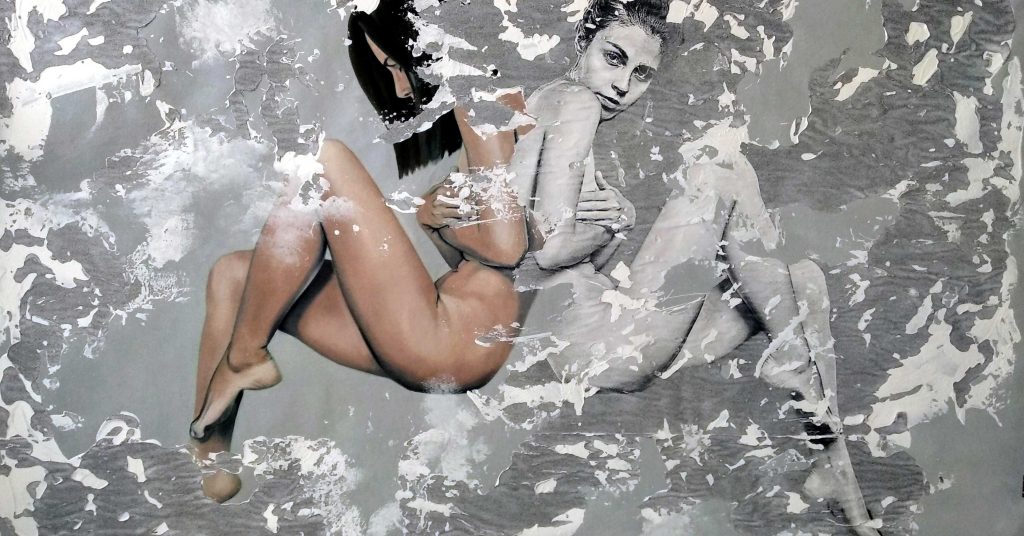
- Introduction
- Why You Need an Art Portfolio
- Key Elements of an Exceptional Art Portfolio
- Organizing Your Art Portfolio
- Creating a Captivating Artist Statement
- Optimizing Your Art Portfolio for Online Platforms
- Promoting Your Art Portfolio
- Inspiring Art Portfolio Examples
- Measuring Success and Iterating
- Conclusion
- FAQs
Introduction
Are you an aspiring artist looking to make your mark in the creative world? Whether you’re a painter, sculptor, photographer, or any other type of visual artist, having a compelling art portfolio is essential. In this guide, we’ll explore the significance of creating a standout portfolio, understand why it matters, and delve into the key elements that make it exceptional.
Why You Need an Art Portfolio


Artists often wonder, “Why bother with an art portfolio?” The answer is simple: it’s your visual resume, your masterpiece collection that introduces you to the world. An art portfolio serves as a powerful tool to showcase your skills and creativity. It’s not just about displaying your art; it’s about telling your artistic story.
Showcasing Skills and Creativity
Your art portfolio is more than a compilation of your best works; it’s a narrative that speaks to your artistic journey. As you present your pieces, the viewer gets a glimpse into your creative evolution, from the strokes of your early works to the refined mastery of your latest creations.
Securing Job Opportunities
Imagine your portfolio as the golden ticket to your dream job or project. Employers and clients often request portfolios to assess your suitability for a role. Your art portfolio becomes the bridge that connects your talent with potential opportunities.
Key Elements of an Exceptional Art Portfolio
A stellar art portfolio isn’t just a collection of random pieces; it’s a carefully assembled narrative that showcases your artistry, tells a cohesive story, and leaves a lasting impression on viewers. Like a well-crafted book, your portfolio should have a clear plot, engaging characters, and a satisfying conclusion.
Quality and Variety:
Your portfolio should showcase your best work, highlighting your versatility and range of skills. Don’t be afraid to include a mix of mediums, styles, and subjects. This will demonstrate your ability to adapt to different creative challenges and your passion for exploring a variety of artistic avenues.
Conceptual Cohesiveness:
While variety is important, it’s equally crucial to maintain a sense of conceptual coherence throughout your portfolio. Aim for a thematic thread that weaves through your chosen works, creating a unified artistic vision. This could be a series of paintings exploring the same subject matter, a collection of sculptures that share a symbolic language, or a series of drawings that delve into a specific emotion or narrative.
Technical Excellence:
Your technical proficiency should shine through in every piece you present. Whether you’re working with oils, watercolors, charcoal, or digital media, ensure your artworks are well-executed and demonstrate your mastery of the chosen medium. Sharp lines, precise composition, and skillful use of color are all key indicators of technical excellence.
Artist Statement:
Your artist statement is your chance to provide context and depth to your work. It should provide insights into your artistic process, inspirations, and the significance of your chosen themes. Explain why you chose these particular subjects, what drives your creative decisions, and how your work connects with the world around you. A compelling artist statement will give viewers a deeper understanding of your artistic ethos and the motivations behind your creations.
Professional Presentation:
The final step in creating a stellar art portfolio is ensuring its presentation is of the highest quality. Use high-resolution images that accurately represent your artworks, and arrange them in a visually appealing and organized layout. Consider using a professional portfolio platform or creating a dedicated website to showcase your work online.
Organizing Your Art Portfolio


Once you have selected the work for your portfolio, you need to organize it in a way that makes sense and flows well. The way you organize your portfolio can significantly impact the overall experience and impression it leaves on viewers. Here are some considerations for organizing your art portfolio:
Purpose and Audience:
The organization of your portfolio should align with the purpose and audience you are targeting. If you’re applying for art school, a chronological or thematic approach may be suitable, showcasing your artistic development or focus on specific themes. For gallery representation, a more focused thematic or categorical approach could highlight your expertise in a particular medium or style.
Flow and Narrative:
Think of your portfolio as a visual narrative that tells a story about your artistic journey. Arrange your works in a logical order that guides the viewer through your artistic progression and highlights your key strengths. Consider using transitions, such as similar color palettes or subject matter, to create a cohesive flow.
Accessibility and Ease of Navigation:
Make sure your portfolio is easy to navigate for viewers. Use clear labels, headings, and dividers to guide viewers through your works. Consider using a digital portfolio platform that allows for interactive features like zoom and slideshows to enhance the viewing experience.
Considerations for Different Platforms:
If you’re creating a physical portfolio, carefully select the size and material of your portfolio to protect your works and present them in the best light. For online portfolios, ensure high-resolution images and a responsive design that adapts to different devices.
Here are some specific examples of organization methods:
Chronological Order:
Arrange your works from earliest to latest, showcasing your artistic evolution over time. This method is particularly effective for showing progress and development.
Thematic Order:
Group your works by common themes, subjects, or emotions. This method can highlight your consistency and coherence across different projects or genres.
Categorical Order:
Divide your works by medium, style, or format. This method showcases your versatility and range of skills across different artistic disciplines.
Hybrid Approach:
Combine two or more organization methods to create a more dynamic and engaging portfolio. For instance, you could use a thematic approach for overall structure and then introduce chronological or categorical subcategories.
Remember, the goal of organizing your portfolio is to create a cohesive and visually appealing experience that effectively communicates your artistic vision and attracts the attention of potential viewers, clients, or mentors.
Creating a Captivating Artist Statement
Your portfolio tells a visual story, but your artist statement adds the words that bring your narrative to life.
Crafting a Compelling Narrative
Think of your artist statement as the voice behind your art. Craft a concise and compelling narrative that gives viewers insight into your creative process, inspirations, and the emotions you aim to evoke through your work.
Expressing Your Creative Philosophy
What drives your artistic expression? Share your creative philosophy—your beliefs, values, and the unique perspective that sets your art apart. A well-articulated artist statement adds depth to your portfolio.
Click here to lean everything you need to know to do your artist statement.
Optimizing Your Art Portfolio for Online Platforms


In today’s digital age, your art portfolio needs to be accessible and captivating online to effectively reach potential viewers, clients, and mentors. Here are some key strategies for optimizing your art portfolio for online platforms:
1. Create a Dedicated Online Portfolio:
A dedicated online portfolio serves as your digital storefront, showcasing your work to a wider audience. Consider building a professional website or using dedicated portfolio platforms like Behance, ArtStation, or Carrd to create a visually appealing and user-friendly online presence. Your website or portfolio should be easy to navigate, load quickly, and be responsive across different devices.
2. High-Quality Images:
High-resolution images are crucial for accurately representing your artworks and providing a visually engaging experience for viewers. Use high-quality cameras or scanners to capture your work, ensuring sharp details and accurate color representation. Optimize your images for web viewing by compressing them without compromising quality.
3. Interactive Elements:
Enhance the online viewing experience by incorporating interactive elements like slideshows, videos, or virtual tours. These elements allow viewers to explore your work in more detail, providing a richer and more immersive experience. Consider using tools like ArtFlare or Artify to create interactive portfolios.
4. Search Engine Optimization (SEO):
Integrate SEO strategies into your portfolio to improve its visibility in search engines. Use relevant keywords throughout your portfolio’s content, including titles, descriptions, and meta tags. Additionally, build backlinks from other websites to your portfolio to enhance its authority and search rankings.
5. Cross-Platform Promotion:
Promote your online portfolio across various platforms, including social media, art communities, and online art galleries. Share your portfolio links on your social media channels, engage with art-related groups, and submit your work to online art competitions or exhibitions.
6. Mobile Optimization:
Ensure your portfolio is optimized for mobile devices, as a significant portion of online traffic comes from mobile users. Use responsive design techniques to adapt your portfolio to different screen sizes and ensure a seamless viewing experience across smartphones and tablets.
7. Regular Updates:
Regularly update your portfolio with new artworks to showcase your ongoing progress and maintain interest from viewers. This demonstrates your activeness as an artist and keeps your portfolio fresh and engaging.
8. Accessibility Considerations:
Ensure your portfolio is accessible to people with disabilities by incorporating alt text for images and providing alternative text descriptions for non-textual elements. This makes your portfolio inclusive and accessible to a wider audience.
9. Professionalism and Branding:
Maintain a professional tone and visual style throughout your portfolio, ensuring consistent branding and messaging. Use a consistent color palette, typography, and overall design aesthetic to create a cohesive and recognizable brand identity.
10. Seek Feedback and Iteration:
Gather feedback from fellow artists, mentors, or potential viewers to identify areas for improvement in your portfolio. Use this feedback to refine your presentation, strengthen your artist statement, and enhance the overall user experience.
Promoting Your Art Portfolio


Creating a stellar art portfolio is just the beginning. Now, let’s discuss how to promote it effectively.
Leveraging Social Media
Social media is a powerful tool for artists. Leverage platforms like Instagram, Pinterest, and Twitter to showcase your art, connect with fellow artists, and engage with a wider audience.
Networking and Collaboration
Beyond the digital realm, networking within the art community is invaluable. Join online art forums, attend local art events, and collaborate with other artists. Networking opens doors to opportunities and allows you to learn from peers.
Inspiring Art Portfolio Examples
Explore these notable art portfolios for creative inspiration:
- Michelle Carlos:
- A personalized splash page on her website introduces visitors to her expressive illustration world, offering a captivating preview.
- Jessie Maxwell Bearden:
- Showcasing artwork inspired by “unorthodox materials influenced by pop culture,” her website features a unique visual style that stands out.
- Adrian Cox:
- An online art portfolio that serves as an inspiring example, displaying the artist’s diverse and compelling body of work.
- Kisa Sky Shiga:
- Completed as part of a portfolio preparation course, her portfolio exemplifies printmaking, making it a noteworthy example for a university Foundation application.
- Jeffrey Ellis:
- Featuring diverse projects and captivating animation, his website is designed to grab the attention of potential clients.
Draw inspiration from these examples as you embark on creating your own compelling art portfolio.
Measuring Success and Iterating


Success is a journey, not a destination. Let’s explore how you can measure the success of your art portfolio and continually refine it.
Analyzing Portfolio Performance
Keep a close eye on performance metrics. Analyze which pieces resonate the most with your audience, the platforms driving the most engagement, and any patterns in viewer interactions.
Seeking Feedback
Feedback is a valuable tool for improvement. Seek constructive criticism from peers, mentors, or your audience. Embrace feedback as a means to refine your portfolio and enhance your artistic skills.
Continuous Improvement
The art world is dynamic, and so should be your portfolio. Embrace a mindset of continuous improvement. Stay open to experimentation, new techniques, and evolving your style.
Conclusion
Crafting a stellar art portfolio is a journey of self-discovery and creative expression. It’s more than a showcase of your best works; it’s a testament to your artistic evolution. As you embark on this endeavor, remember that your portfolio is a living entity—constantly evolving, just like you.
FAQs
1. How many pieces should I include in my art portfolio?
- Aim for quality over quantity. Include enough pieces to showcase your skills and range, typically around 15-20.
2. Should I create a physical or digital art portfolio?
- It depends on your preference and the nature of your work. Digital portfolios are versatile and easily shareable, while physical portfolios can make a strong impression in certain settings.
3. How often should I update my art portfolio?
- Regular updates are beneficial. Aim to refresh your portfolio at least once a year to reflect your growth and latest creations.
4. Can I include works in progress in my portfolio?
- While it’s generally recommended to showcase finished pieces, including works in progress can provide insight into your creative process.
5. What role does storytelling play in an art portfolio?
- Storytelling adds depth to your portfolio. Consider the narrative behind your art, as it helps viewers connect with your work on a more personal level.




